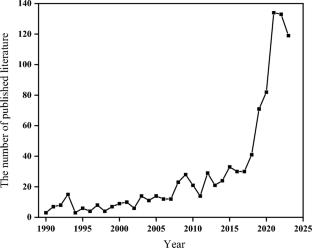A review on the chemical speciation and influencing factors of heavy metals in Municipal Solid Waste landfill humus
Abstract
Heavy metal pollution in landfill humus can cause serious environmental problems and may endanger soil ecosystems and human health. The biological toxicity of heavy metals is not only related to their total amount but also influenced to a greater extent by the distribution of their chemical speciation. Exploring the different chemical speciation and proportions of heavy metals can provide a more comprehensive and accurate understanding of the pollution characteristics and biological toxicity of heavy metals in landfill soil. Based on a review of the relevant literature, this paper systematically summarizes the recent research status of typical heavy metal chemical speciation in landfill humus. This chemical speciation is diverse and complex. For instance, heavy metals in residual states and organically bound states have little impact on organisms, while heavy metals in exchangeable states and Fe–Mn oxide states can easily migrate and transform. The chemical speciation of heavy metals is affected by many factors, among which the soil pH and organic matter content are some of the most important factors. Finally, the existing gaps in the current research on the chemical speciation of heavy metals in landfills are described and future research directions are proposed. This work provides a theoretical reference for researching the restoration of heavy metal-contaminated humus soil and the resource utilization of humus soil.
Graphical abstract



 求助内容:
求助内容: 应助结果提醒方式:
应助结果提醒方式:


